The benefits that a single plant could provide are way more in number than any ordinary human-made object.
And what could be more significant and crucial than the oxygen-rich air we breathe in that plants provide?
And what is even more interesting about plants is that apart from just giving us breathable air, they also purify the air around us by eliminating toxins from the environment.
It so happens that a large amount of harmful chemicals and pollutants in the air is released by activities as simple as household chores that include wall painting, burning wood or other fuel sources, dry-cleaning with oils, etc.
Certain plants can help cleanse the air of such toxins by ridding the atmosphere of harmful substances through chemical conversations and biological processes.
And in the following extensive guide, we have listed some common house plants which you can easily keep around your living space to enjoy fresh air always!
Air-Purifying Plants

-
Peace Lily
Peace Lily is one of the few plants that bloom with beautiful white flowers indoors, throughout the summer season. It is a natural air purifier for molds.

It also efficiently eliminates harmful chemicals such as acetone and alcohol (used in cosmetic products like nail polish remover and hair sprays) from the surrounding air.
According to a test conducted by Nasa, Peace Lily has also been found to rid the air of chemicals such as benzene, trichloroethylene, ammonia, and formaldehyde within a short span of time.
However, the plant can be toxic to pets and small children, and therefore should be kept out of their reach.
-
Aloe Vera Plant
The Aloe plant needs no introduction when it comes to benefits. It packs a punch when it comes to useful medicinal properties and has been a popular ingredient in numerous herbal treatments since ancient times.
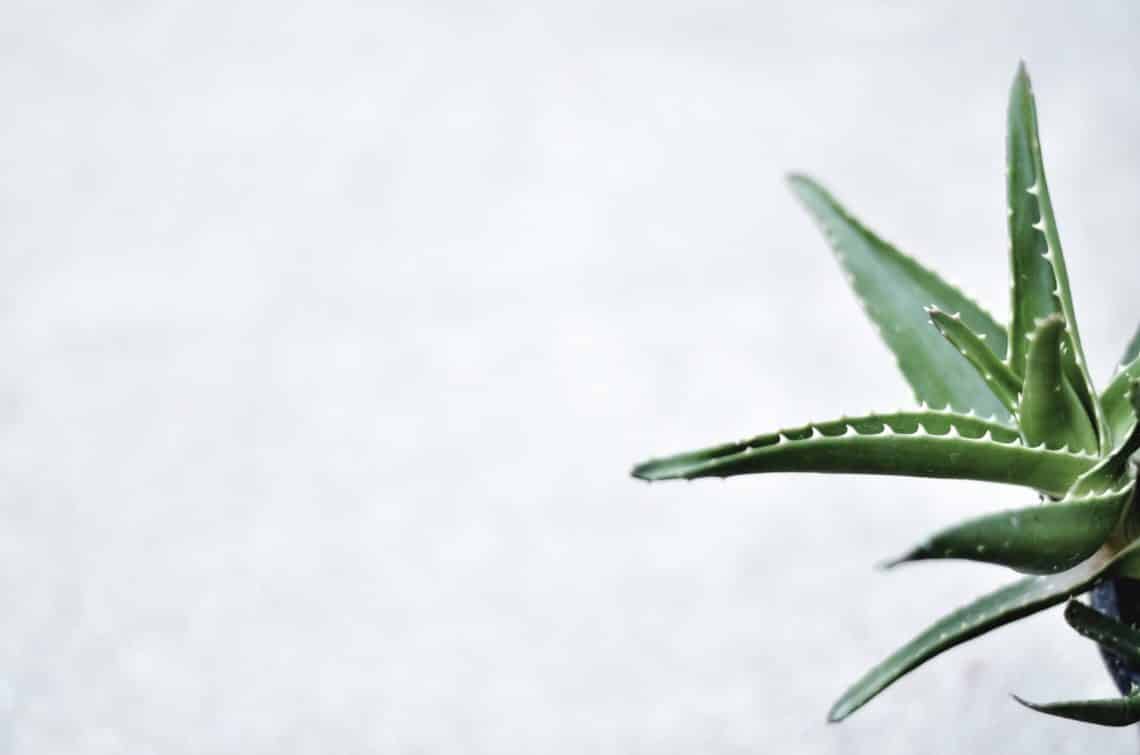
The slimy, gelatinous substance from its leaves is rich in anti-inflammatory and antibacterial properties that naturally purify and soothes the skin.
To add to this, aloe vera is found to be excellent at eliminating formaldehyde and airborne benzene, a chemical that is commonly found in paint and household cleaners. It is not harmful in any way whatsoever to humans or pets and could be kept anywhere in your house.
-
Rubber Plant
The Rubber plant is an evergreen tree with large, waxy leaves. It is native to India. Although this plant is toxic to animals, it can eliminate harmful toxins from the air. It can efficiently remove formaldehyde that’s emitted by common household cleaning products or grooming substances.
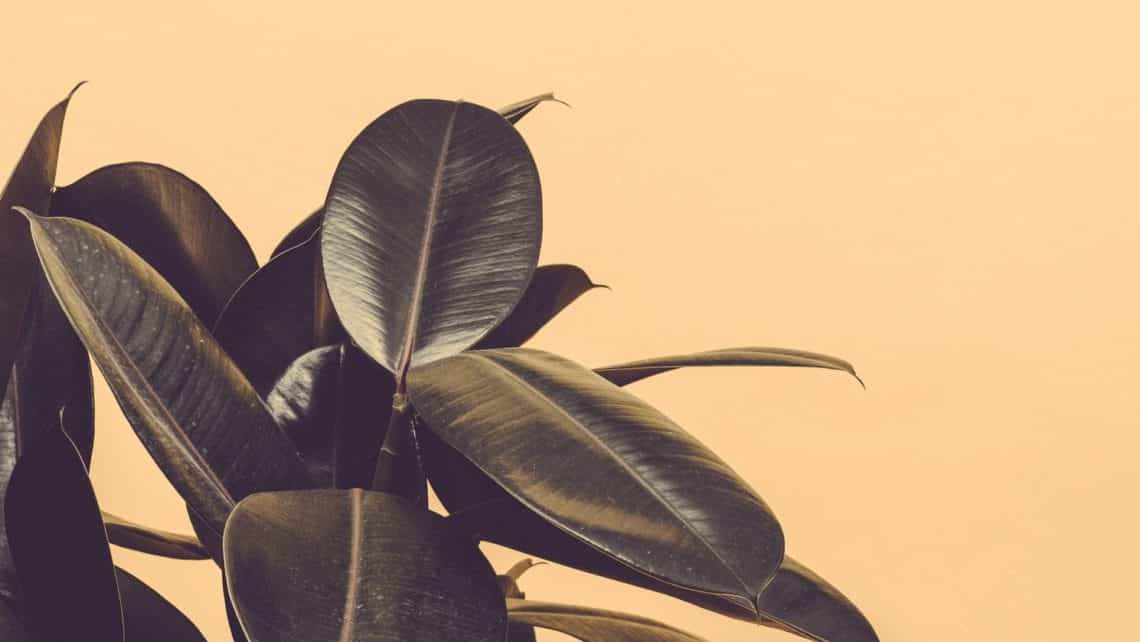
The plant absorbs the toxic gases emitted from these chemicals into its leaves and through its roots by a biological process known as “phytoremediation.” The microorganisms residing in the soil around its roots also play a vital role in contributing to the plants overall purification process, neutralizing volatile organic compounds or VOCs and other pollutants.
-
Bamboo Palm
The beautiful Bamboo Palm is an ornamental indoor plant that can grow up to around 12 feet if taken proper care of. It is native to Madagascar and thrives in bright light.
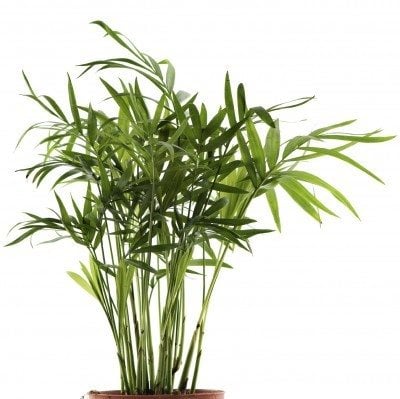
The Bamboo Palm is a non-toxic air purifier plant that filters out chemicals such as carbon monoxide, formaldehyde, benzene, xylene, chloroform, and other harmful substances from the air.
The plant has a good capacity for transpiration. This keeps the air in your home humidified and fresh all of the time.
-
Boston Fern
The Boston Fern is a lush hanging fern plant that could be commonly spotted indoors at many residences. It looks beautiful and is known to actively eliminate all traces of formaldehyde from the air. It can also efficiently eliminate xylene and benzene from the atmosphere which is generally used for work in garages or outhouses.
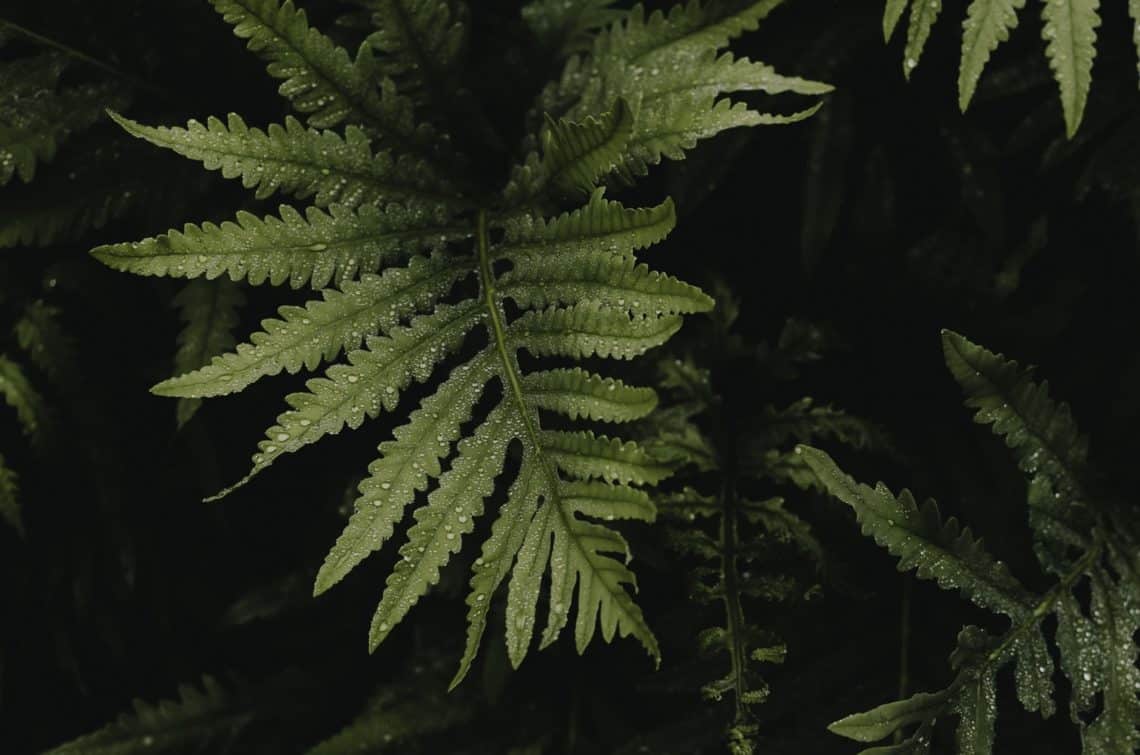
These chemicals can pollute your living area, especially if the garage is attached to it. However, the one problem with this plant is that it’s pretty high-maintenance. It thrives in moist conditions requiring ample humidity as well as indirect light, which could be difficult to provide.
-
Spider Plant
The Spider Plant is one of the easiest plants to maintain at home. It requires bright sunlight and preferably, watering every 2-3 days a week. The offshoots of this plant that are also known baby “spiders” can be snipped off and grown into new plants.
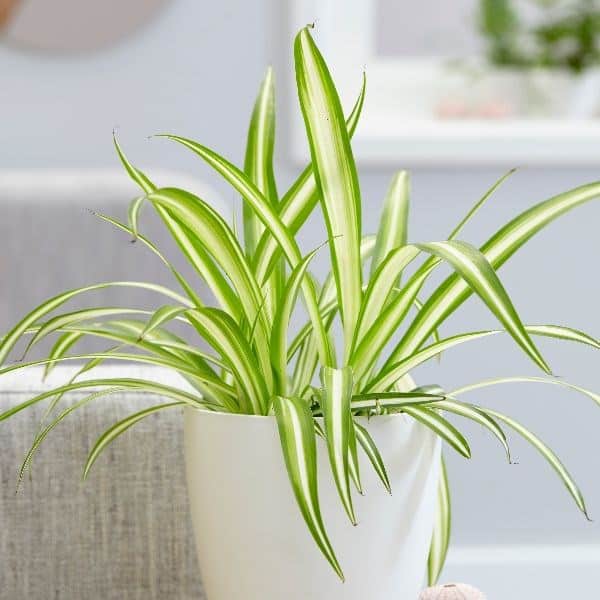
Spider plants can swiftly and efficiently remove VOCs from the air and lower the levels of these organic compounds within minutes of exposure.
It has been known to remove formaldehyde and xylene from the air. Also, it is a completely non-toxic plant that can safely be placed anywhere around the house as it’s not gonna harm any pet or human in any way.
-
Weeping Fig/Ficus
The Ficus tree or the Weeping Fig, as it is popularly known as, is a low-maintenance air-purifying plant that can eliminate traces of xylene, formaldehyde, and toluene present in the air in your living space.
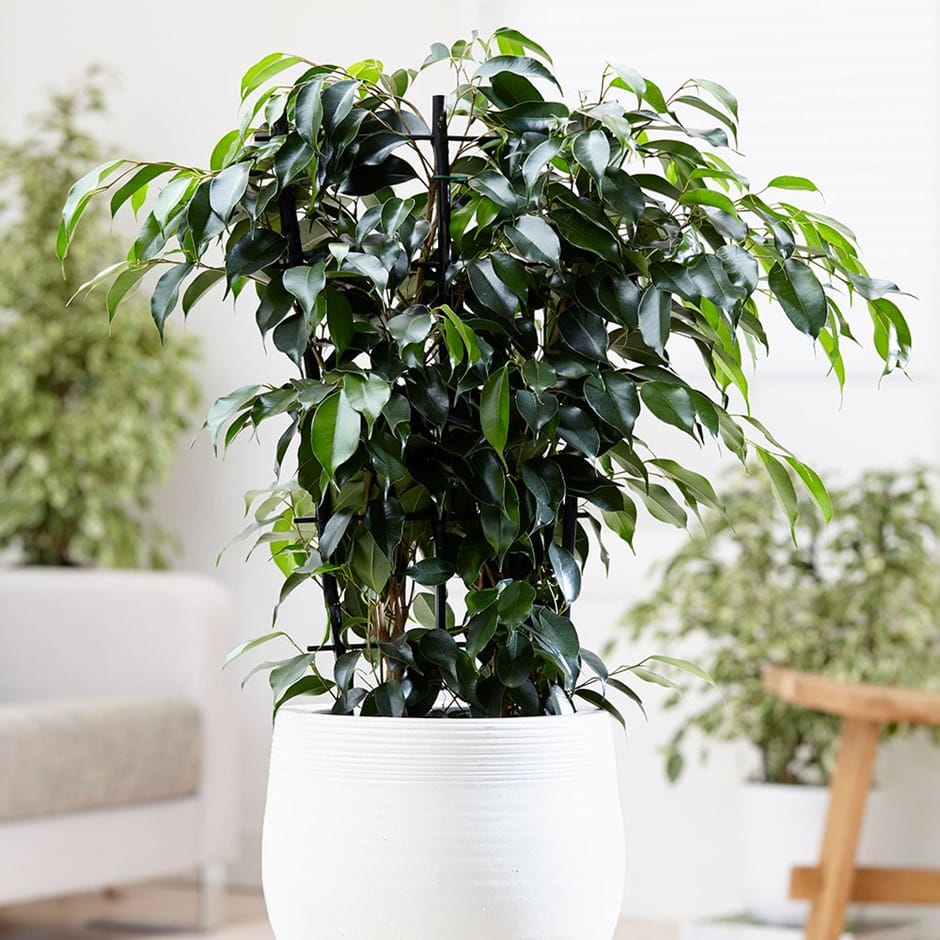
It grows in indirect sunlight and requires a lot of water. It is a hardy plant and can grow up to 10 feet in height, depending on the weather condition in which it is kept.
The plant also removes any presence of trichloroethylene from the air, filtering it for you and your family.
The Weeping Fig, however, could be poisonous to animals and should not be kept around pets.
-
Snake Plant
This is another common house plant that is also, interestingly, known as the “Mother-in-Law’s Tongue.” The tall leaves of the Snake Plant resemble a snake’s beautifully patterned head or green flames.

The plant can filter out harmful chemicals such as benzene, xylene, and formaldehyde from the air, rendering it clean and fresh for you to breathe in.
It is a very low-maintenance plant that prefers drier conditions and occasional watering. It has a long life and grows easily.
-
English Ivy
The common English Ivy can be seen crawling up the outer walls of houses. This can also be kept as a houseplant. The English Ivy with its beautiful leaves can efficiently purify the air, ridding it of extremely harmful carcinogenic substances. A known carcinogen is benzene, which is commonly found in paint, dyes, and detergents, pressed wood furniture, or synthetic fibers.
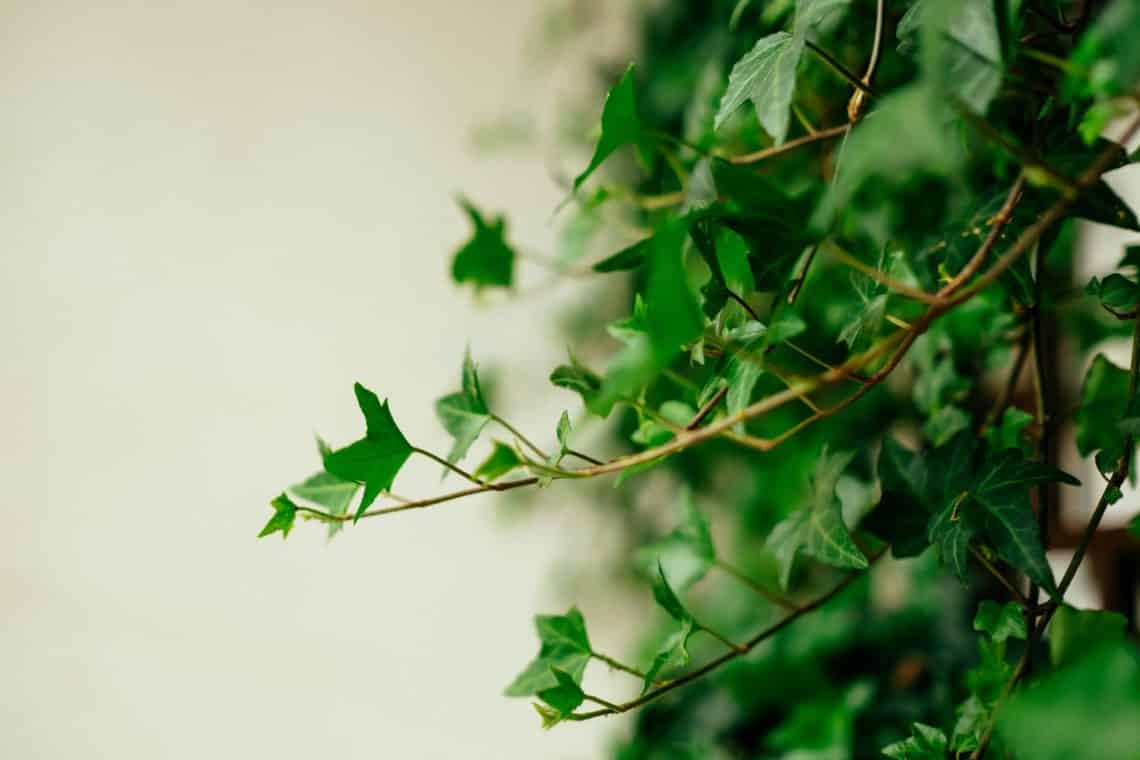
The plant requires a fair amount of light to survive and could be poisonous to humans and pets.
-
Dragon Tree
The Dragon Tree is another common houseplant that has a beautiful and unique sort-of “tri-shoot” structure that grows out into large, fan-shaped, fringed leaves.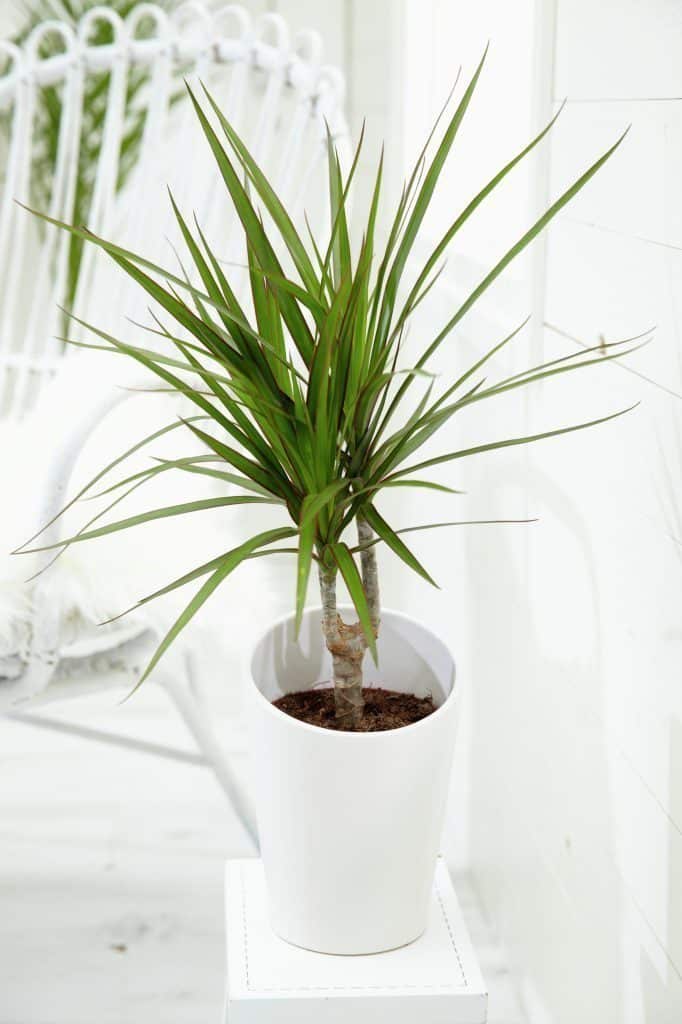
The Dragon Tree is also largely admired for its air-purifying abilities and is kept in the living space for that very reason. This plant can remove trace amounts of trichloroethylene as well as xylene from the air.
This plant is native to jungles and flourishes in a humid environment. However, it doesn’t require a large amount of light and could be easily maintained indoors.
-
Chinese Evergreen
The tropical Chinese Evergreen is native to Asia and is commonly kept as an ornamental house plant by many. This plant can grow in medium to low sunlight and can live up to 10 years,
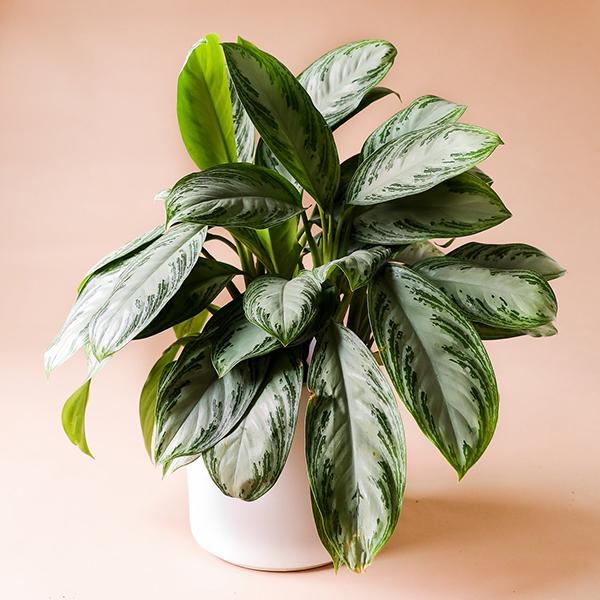
The Chinese Evergreen is a good air-purifying plant that eliminates all traces of toxins such as benzene, trichloroethylene, and formaldehyde from the atmosphere.
However, the plant can be toxic itself if ingested and therefore should be placed away from the reach of children and pets.
-
Dwarf Date Palm
The Dwarf Date Palm plant can grow up to 10 feet, sprouting sharp needle-like spines for leaves. The plant is known for its exceptional capacity for removing all traces of xylene from the atmosphere.
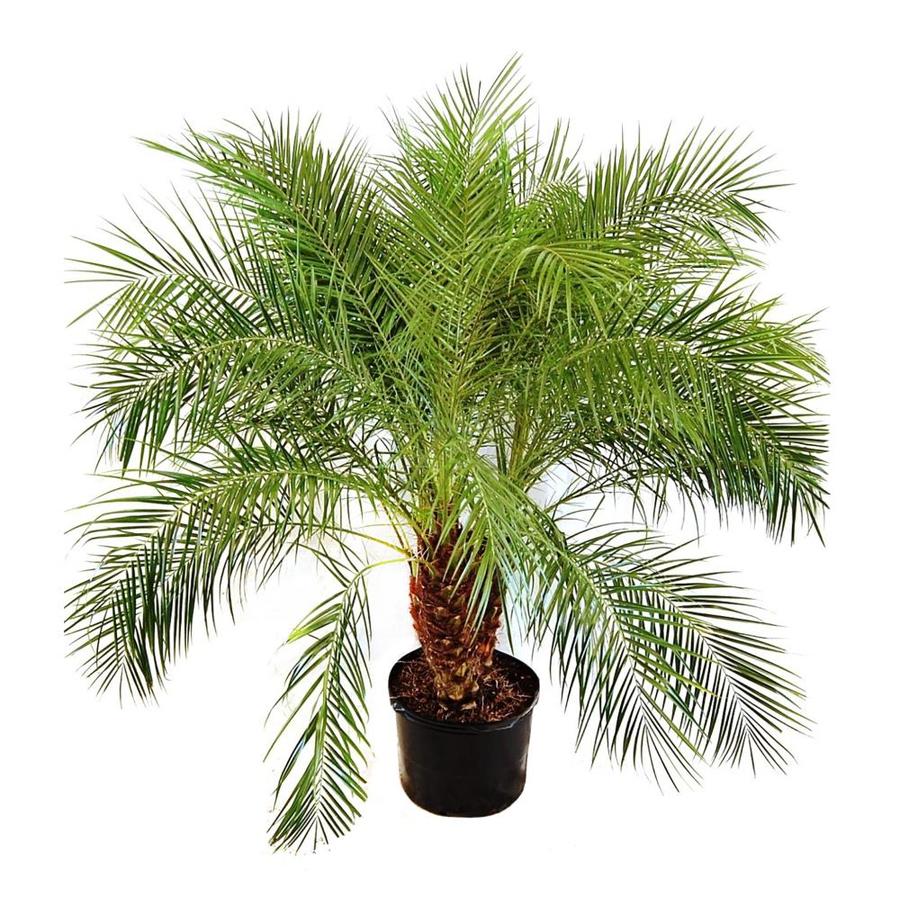
Xylene is a harmful chemical that is commonly given off by different kinds of paints, and the smoke emitted from tobacco and wood-burning fireplaces. It can have severely adverse effects on health.
In fact, NASA recommends planting one Dwarf Date Palm every 100 square feet in your home or in any other space.
-
Gerbera Daisy
This is a common ornamental house plant that yields beautiful small yellowish-orange flowers. The plant makes a lovely sight and cheerful atmosphere indoors.
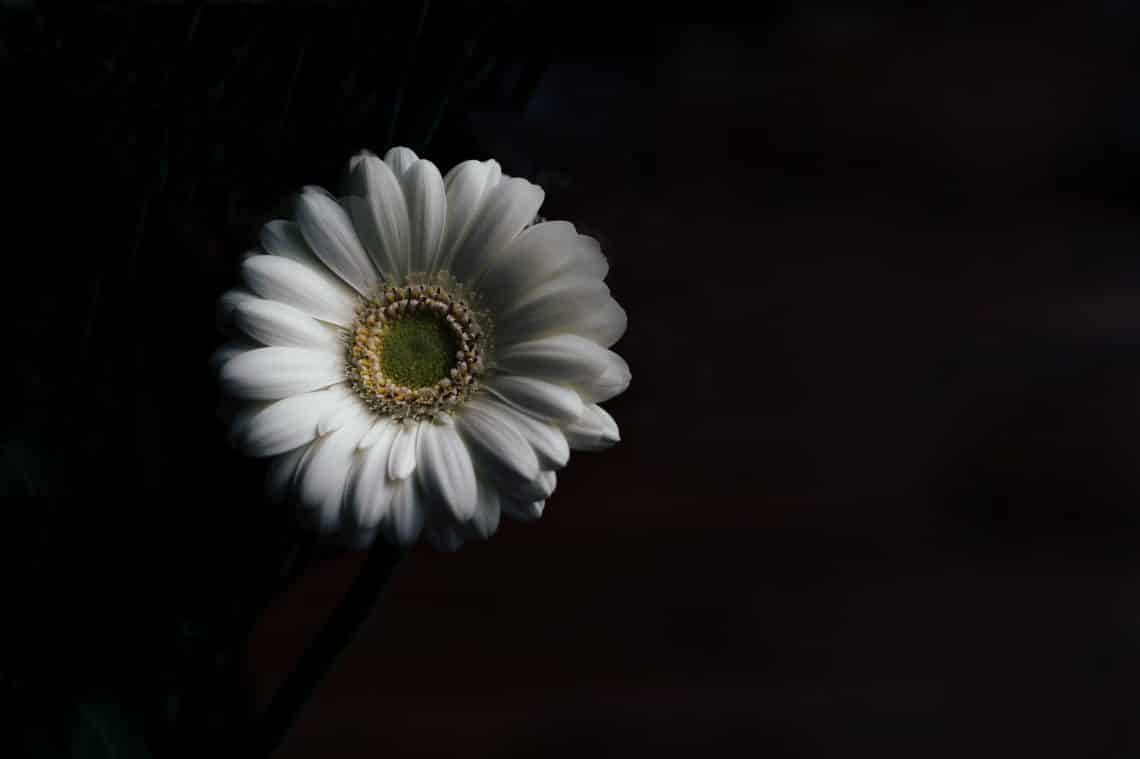
Additionally, the Gerbera Daisy can effectively remove toxic substances such as Trichloroethylene (TCE) and benzene from the air.
The plant thrives in the springs and summers, but you can also get them at larger grocery stores even during winters.
-
Garden Mum
The Garden Mum is a common flowering plant. The beautiful flowers of plants will bloom for six weeks during the season.
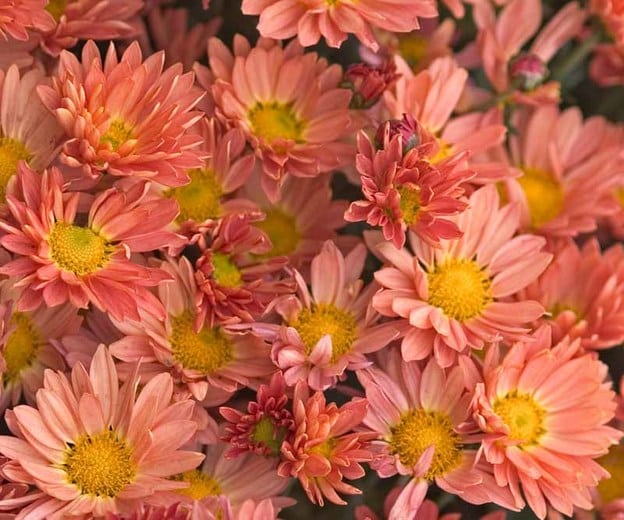
The plant is often ranked at the top-most place owing to its air-purification capabilities which are higher than most other plants. It removes all amounts of benzene, ammonia, xylene, formaldehyde, and other pollutants from the air within a very short period of time
However, it should be noted that this plant will efficiently continue to purify the air as long as it blooms., after which it could be placed outside.
Also, the plant is toxic for animals and should not be kept at any spot where pets can get to it easily.
-
Dracaena
This plant comes with long leaves that have white or red lines. It comes in 40 different species in all sorts of shapes, sizes, and colors.
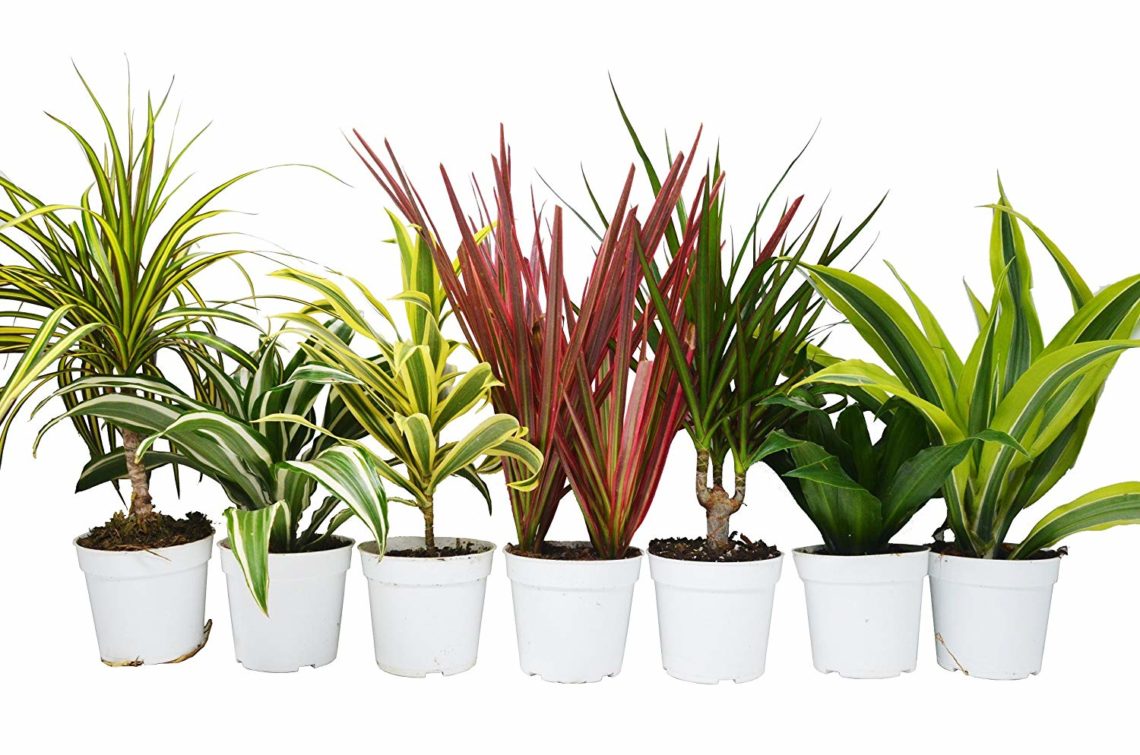
Dracaenas look charming and are known to efficiently purify the air, filtering it off traces of benzene, formaldehyde, xylene, and trichloroethylene.
This plant is also toxic for animals and should be kept out of reach of pets if at all costs.
Conclusion
And this was it for our extensive list of some of the effective air-purifying plants which you can easily keep indoors to purify your air naturally.
Since mold and mildew are two things that could be really difficult to get rid of that easily, you might wanna check out this link on the best air purifier to ensure your air is clean; this being said, nature and plants always come first!
Keep in mind that some of these could be harmful to animals and plants, proper care and caution should be taken while handling or placing them at your home.
We hope you liked our effort.
Till next time!
Related Articles
24 Poisonous Garden Plants to Avoid [ With Pictures to Identify Them ]
12 Best Charcoal Air Purifiers


